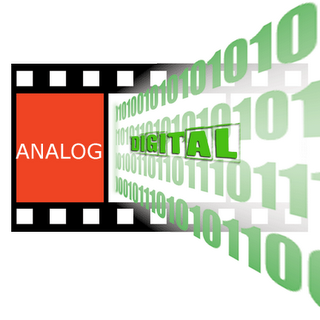X-Ray Film Scanners and Digitizers, X-Ray Film Scanning Services and Software
How to Go from Analog to Digital Radiography
posted Apr-1-2015There are many benefits for dental offices and radiology clinics when upgrading from analog to digital radiography, including better image quality, faster procedures and better workflow management. Surprisingly, despite the initial cost of the upgrade, digital imaging boasts a lower overall cost of ownership. Some of the lowered cost has to do with the increased efficiency of the digital system overall; some has to do with the decreased costs associated with film storage as well as the elimination of costs associated with film and developing chemicals.
 Digital radiology is an environmentally-friendly option with no consumables. It also offers convince to patients because digital images can be easily transferred via a CD, flash drive or Cloud based transfer system, with no bulky films to carry around, mail or return. This makes it easy for off-site specialists to read images in near-real-time. This means faster diagnosis, response time, and better patient service.
Digital radiology is an environmentally-friendly option with no consumables. It also offers convince to patients because digital images can be easily transferred via a CD, flash drive or Cloud based transfer system, with no bulky films to carry around, mail or return. This makes it easy for off-site specialists to read images in near-real-time. This means faster diagnosis, response time, and better patient service.
Benefits of Digital Radiography
- Faster throughput
- Fewer repeat scans
- Better facility utilization
- Faster reporting
- No lost film
- Fast ROI
- Environmentally friendly
- Patient convenience
- Faster collaboration
- Lower radiation dose
Potential Problems
With all of the benefits associated with moving from Analog to Digital, it’s easy to overlook some of the potential problems that must also be dealt with during the transition. For instance, before even beginning the practice should have a plan in place. Workflow redesigns, staff training, volume variations, digital privacy, and scanning/disposal of old X-ray film are some of the issues best considered before the transition begins.
Workflow Redesign
When changing from analog to digital, redesigning the workflow is critical to success. Staff routines that worked with analog systems generally need to be streamlined, old habits broken, and new habits instilled. All of this takes time, training and good attitude on the part of both management and staff. You would be wise to set the stage well ahead of the actual date of transition.
Digital Privacy
It is generally accepted that maintaining your patients’ confidentiality and privacy through HIPAA compliance is actually easier with digital files than with paper/film records, nonetheless your staff will need to be brought up to speed on digital requirements. This should be part of the training process.
Scanning and Disposal of X-ray Film
While digital radiography is exceedingly efficient, trying to work in a world that is partially digital and partially paper/film is exceedingly inefficient. Part of the transition process should include a plan for rapid conversion of paper/film archives. This is best left to a professional outsource firm. Professionals have the required scanning equipment, trained staff and the capability to safely and securely dispose of both paper files and X-ray film. Remember that HIPAA requirements apply!
In addition, with X-ray film, EPA requirements also apply. Pick a scanning company that can also provide recycling and provide you with a certificate of destruction proving that your film has been properly destroyed according to federal laws. Some will even pay you for the silver that is recovered during the recycling process.

